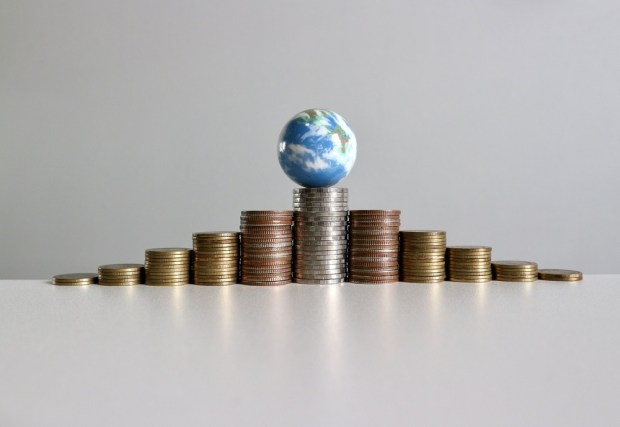As Economies Slow And Global Debt Grows, Red Lights Flash

The economic slowdown that has been flagged this week by the International Monetary Fund (IMF) is one that may be sparked in part by a no-deal Brexit, and fanned by a consistently slowing Chinese economy. The data from China is less than stellar, showing the slowest pace since about 1990 – and the lingering government shutdown in Washington, D.C. is not helping matters.
While Brexit’s nail-biting saga continues – and as we worry about China, of course, as one of the main engines of economic growth – other warning signs continue to flash, hinting at an addition to the “things to worry about if you have not yet started worrying about them” dance card. (My, that dance card’s getting crowded.) In a word, a four-letter one: debt.
Simple logic holds that the more debt one takes on, the harder it is to service that debt if checking and savings accounts are too scant to handle the burden.
The mismatch is a red light for those who extend credit – indicating that what is lent out today may not be recouped tomorrow. So it is for individuals … and so it is for corporates and countries, too.
The trend is in place in the largest sense, global in scope, and might be enough to trigger warning bells to all manner of stakeholders in finance done internationally – and in the billions and trillions of dollars – from investors to governments.
Consider the fact that earlier this month, the Institute of International Finance (IIF) found that as of the end of the third quarter of 2018, global debt levels stood at $244 trillion, or as much as 318 percent of the global GDP.
Those numbers are eye-popping to be sure, but so is this statement: that we are “pushing at the boundaries of comfortably sustainable debt,” according to Sonja Gibbs, managing director of policy initiatives at IIF, as quoted by Axios.
Here again is the scenario noted above: When you have to pay more on what you’ve borrowed, you have less in the proverbial till to fund further growth.
On a more micro level, when rates rise – yes, they are coming off historically low levels, but rising nonetheless – but top-line opportunities slow, in the corporate realm the impulse is to hit pause on any number of expansion plans. These plans could be the type that add to staffing counts and may tie into software upgrades – and it all translates into a ripple effect that can lead to continued problems servicing debt.
The latest numbers from IIF, recounted by Reuters, lend credence to the idea that companies have been happy to load up on credit. The $244 trillion headline debt is up from $235.1 trillion in 2017. But digging a little deeper, non-financial institutions borrowed just under $73 trillion, all told, as of the third quarter of last year – and that represents a sequential borrowing rate of more than $1 trillion from the second quarter of this past year.
As noted in this space earlier in the month, and as discussed in an interview with Jerry Flum, CEO of CreditRiskMonitor, those firms that have problems paying interest and principal from current operations may try to take on new debt in an effort to grapple with the old debt. Beyond that, default rates may go well beyond the current 1.5 percent rate, and bankruptcies loom.
The consumer is not the only one facing a hangover amid a buying spree that lasted decades and was funded by a “buy now, pay later” mentality. The IMF has pointed toward the struggles of emerging economies that borrowed when rates were low, right off the Great Recession. The IIF report spotlights the appetite that corporates still have for credit, right into the twin headwinds of higher rates and tougher operating environments. No one likes the idea of restructurings, write-offs or even the dreaded B word – but the spate of options are all too real and less than appetizing, as the numbers become ever more ominous.
